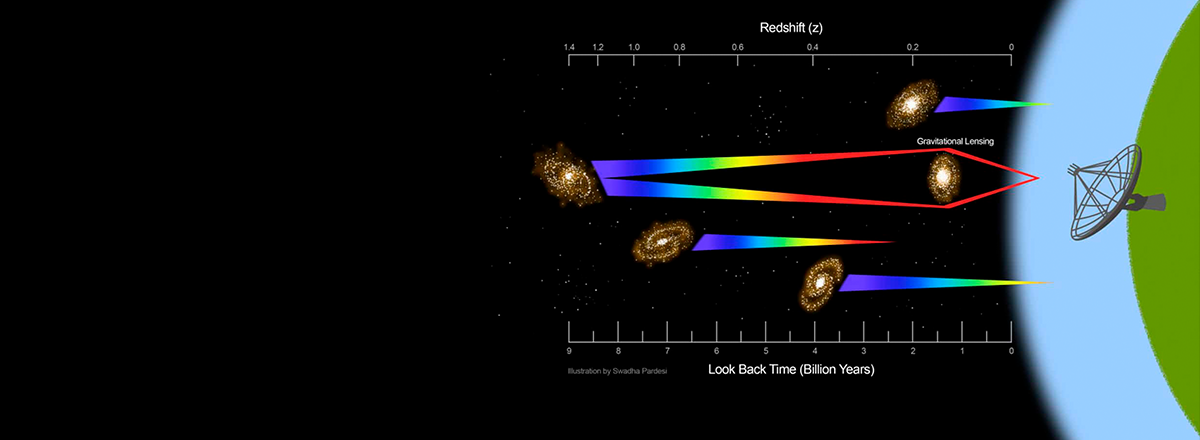Astronomers Capture a Radio Signal from an Extremely Distant Galaxy
This discovery was made possible by a phenomenon called gravitational lensing, in which light emitted by a source is bent by the presence of another massive body, effectively amplifying the signal, the astronomers explain.

A team of astronomers from McGill University in Canada and the Indian Institute of Science were able to detect a radio signal from the most distant star-forming galaxy yet called SDSSJ0826+5630. The look-back time for this source is almost 9 billion years.
The radio signal was emitted when our 13.8-billion-year-old galaxy was only 4.9 billion years old. This signal was detected using the Giant Metrewave Radio Telescope (GMRT) in Pune.
This discovery was made possible by a phenomenon called gravitational lensing, in which light emitted by a source is bent by the presence of another massive body, effectively amplifying the signal, the astronomers explain.
This discovery gives us a fascinating insight into some of the earliest moments in the Universe as well as helps us understand how the earliest stars and galaxies were formed.

